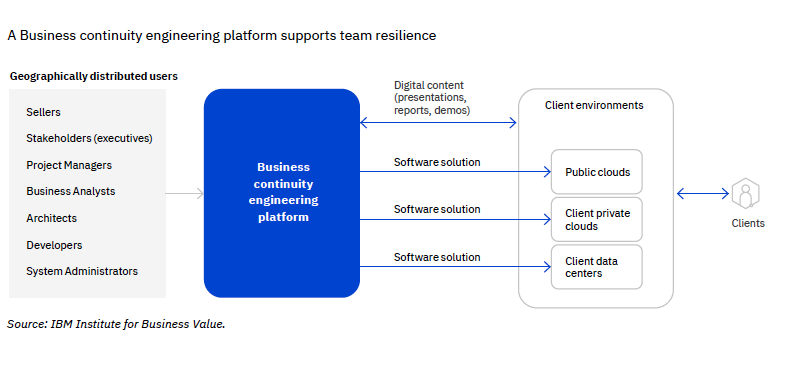Business continuity in pandemics: Building location-agnostic work platforms
Thriving in an era of technology-driven disruption is essential. Indeed, for many, disruption has become a business cliché. Even more recently, however, pandemics and climate change are—and will likely continue to be— dramatically disrupting to businesses, educational institutions and governments around the globe, upending supply chains, commerce, travel, financial markets and even the neighborhood store. In many markets, it seemed everything changed overnight, including employees suddenly being unable to travel to a work office or client location.
Businesses need to be able to react quickly to challenges in where and how work gets done. It need not be a scramble every time. Organizations can prepare in advance for work disruption by embracing resilience and virtualization of work environments.
An effective response needs to be coupled with limited disruption to the workflow. It should enable distributed management of projects, and the ability to scale quickly to address internal and external demand.
A solid foundation of clouds
The most adaptable, resilient businesses tap into cloud-based work environments that support distributed, “work anywhere” teams without sacrificing efficiency, productivity or quality. Indeed, with the right cloud-based work environment, efficiency, productivity or quality will be further enhanced.
With the right business continuity platform, knowledge workers in general, and software development or IT service industries in particular can continue to work despite disruption to physical work location. Teams can also quickly be convened to respond to new opportunities regardless of location or talent distribution.

To some, this approach—enabling employees to work productively from any location, even their own homes—may sound like old news. The percentage of organizations around the world offering their employees telecommuting or work-from-home programs has increased steadily from 27.6 percent of organizations in 2014 to 50 percent of organizations in 2019.
But that doesn't necessarily mean “work from home” is now the de facto norm. Nor does it mean that organizations and teams can retain the levels of efficiency and productivity that they typically achieve at the office.
In some regions, many organizations still have not accommodated work-from-home arrangements, nor have they implemented IT environments designed to enable remote work. Simply speaking, with all their employees co-located in traditional office environments, there’s not been a need.
With co-located teams being rapidly disrupted by recent events whether they are sufficiently virtualized or not, organizations are being compelled to operate in a federated model, often overnight. Teams unused to working in a distributed manner need to become productive within hours. Not only must a new work environment be created for them in the most expeditious manner, the work environment needs to be intuitive, pre-integrated, and easy to learn.
From an organizational perspective, maturity of the organization’s IT environment, data security, cost and organizational productivity becomes centrally important. More broadly, organizations also need to preserve prevailing cultures and values ensuring employees enjoy a sense of connection and engagement.
The platform is the answer
Practically speaking, any platform used to support a new virtualized working environment must also fully equip employees with the tools and processes they need. This is especially true for project teams charged with creating, developing, testing and delivering IT solutions for clients. The platform must adequately answer a range of questions:
- What tools will workers need to complete projects end-to-end? When in the process will they need specific tools, and can they be organized to support an efficient flow of work from project start to completion? Where do employees access tools? Where do they store work-in-progress, including sensitive information, proprietary code and the like? How is all this made secure?
- How and “where” will distributed team members collaborate? How will they continue to employ agile methods such as stand-ups, scrums and feedback and improvement cycles? How do project managers make sure their teams are working at optimum levels and projects remain on schedule?
- And what about the client? Does the new work environment help instill trust, or does it introduce a layer of “I can’t see you—are you really working on my project?” doubt in the client’s mind? Is the new distributed work environment transparent to the client such that they can engage in ways and at times that they are able to do under normal working conditions?
Meet the authors
Ray Harishankar, IBM Fellow, IBM QuantumHicks Lin, Distinguished Engineer, CTO, Assets and Architecture, IBM Consulting
Download report translations
Originally published 31 March 2020


